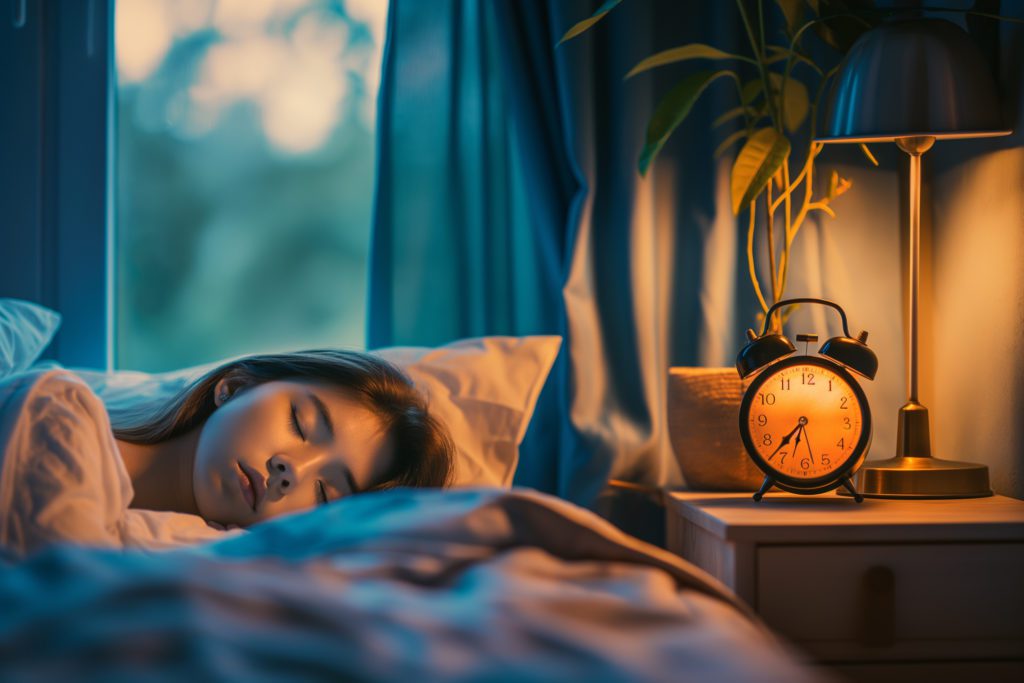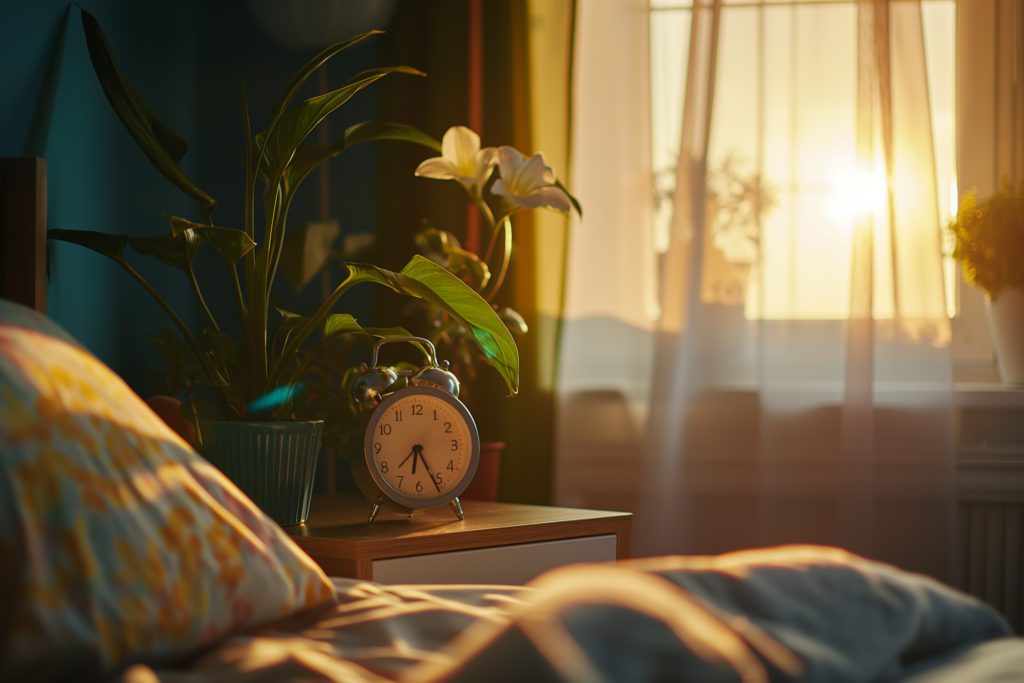
Did Spring Break Mess Your Sleep Schedule? Here’s How to Get Back on Track
Everything you need to know to get your sleep schedule back on track after spring break.

Spring break is a time to relax from school, a week to rest and rejuvenate before returning to finish the semester. Anyone on spring break knows the challenge all too well, though: you sleep extra to make up for the late nights spent cramming for midterms and finishing projects, but then your sleep schedule gets thrown off, with you going to bed later and later.
When you go back to school, it’s a disaster. You’re more tired than before the break, and it feels like you’ll never catch up on sleep.
If you’re returning to school after spring break and are in this situation, we have some tips to help you get back on track.
The Importance of Sleep Schedules
Before getting into the tips, let’s review why sleep schedules are so important, even for teenagers and adults.
Ultimately, a sleep schedule is your way of guaranteeing that you get enough sleep each night. When you go to bed and wake up at the same time every night and morning, you know just how much sleep you’ll get—you’re not leaving it up to chance.
Additionally, following a sleep schedule helps out your circadian rhythm, or the 24-hour cycle our body follows each day. It aids digestion, hormone production, immune function, and sleep, just to name a few.
Your circadian rhythm aids sleep by regulating your body’s production of melatonin, the sleepiness hormone. If your sleep times are consistent, your circadian rhythm will encourage the body to produce melatonin as nighttime approaches, making it easier to fall asleep. However, if you don’t go to bed around the same time, your circadian rhythm will be thrown off, leading to irregularities in when melatonin is produced and making it harder to fall asleep.
Sleep isn’t just important for feeling awake and alert, either; it’s also crucial for your metabolism, academic performance, and mood. So, by creating a sleep schedule and sticking to it, you’re helping out all areas of your health and well-being.
Creating a Sleep Schedule
The most important element of a sleep schedule is knowing how much sleep you need. Teenagers generally need 8-10 hours of sleep each night, while adults are recommended to get 7-9 hours. These are wide ranges, so some experimentation is needed to determine your personal sleep needs. As a guide, consider how long you would sleep if you didn’t have an alarm set, and start there.
Once you know how much sleep you need, figure out when you need to wake up and count backward the amount of time you need to sleep, subtracting an additional 15 minutes for falling asleep. The time you land on is when you should fall asleep.
Congrats, you now have your sleep schedule!
Still, a sleep schedule doesn’t mean much if you don’t have a solid nighttime routine that sets you up for sleeping success. It doesn’t have to be long, either; the key is to follow the same steps each night to help your body understand that it’s almost time to sleep.
Some steps to add to your nighttime routine include:
- Brushing your teeth and washing your face
- Stretching
- Guided meditation
- Reading (but not on your phone)
Once you have a schedule in place, you need to stick with it every night—even on weekends.
Getting Back into a Sleep Routine
Going back to a structured sleep schedule after being able to sleep whenever you wanted over spring break can be challenging, but here are some tips you can implement to make things easier.
Gradually Shift Your Schedule
Even though you now know the time you need to go to bed to get enough sleep each night, you shouldn’t immediately try to fall asleep at this time. If you’ve been going to bed much, much later, you’ll find yourself staring at the ceiling as the hours tick away. Instead, take a gradual approach—you’ll find it to be much easier.
If you spent spring break going to bed much later than you need to for your early-morning classes, take a few days to ease back into your routine by going to bed 15-30 minutes earlier (and waking up 15-30 minutes earlier) each night until you get to your ideal sleep/wake times.
Turn Off Your Electronics
When you’re working to get your sleep schedule back on track, you need to focus on your sleep hygiene, or the good habits you implement to help you fall asleep. One of these habits is staying away from electronics for at least one hour before going to sleep.
Sunlight signals your body to wake up, suppressing the hormone melatonin, which helps you feel sleepy. Using screens at night gives you this same effect, making it harder to feel tired enough to sleep.
The blue light that screens emit mimics the sunlight you get during the day. Sunlight signals your body to wake up, suppressing the hormone melatonin, which helps you feel sleepy. Using screens at night gives you this same effect, making it harder to feel tired enough to sleep.
Instead of going on your electronics before bed, try reading, journaling, listening to music, or other “unplugged” activities to help you wind down.
Get Some Exercise
The key to getting a good night’s sleep is implementing good habits all day, not just at night. Specifically, getting some exercise during the day helps to promote healthy sleep. It doesn’t have to be intense exercise, either; just walking can offer benefits and expose you to sunlight, further regulating your circadian rhythm.
One thing to remember: if you favor high-intensity workouts, try to complete your workout at least a few hours before you need to go to bed so that your body has enough time to unwind afterward.
Don’t Rely On Late Naps
As tired as you may be when returning from spring break, avoid falling into the trap of daily naps late during the the day to make up for late nights and early mornings. Naps—and especially long naps—make it harder to fall asleep each night, further messing up your sleep schedule. Instead, focus on lengthening your nighttime sleep, and if you absolutely must nap, stick to just a 20-minute power nap in the early afternoon.
Take a Break From Messed Up Sleep Schedules
When on vacation, it’s natural to find yourself going to bed later each night, but this can create some trouble when it’s time to get back to school. Namely, your late-night bedtime doesn’t give you enough time to sleep when you’re back to rising early.
If spring break messed up your sleep schedule, there are steps you can take to get it back on track. By gradually pushing back your bedtime/wake-up time, practicing good sleep hygiene, exercising during the day, and being smart with your naps, you’ll be back to normal just in time to ace your next test.
FAQ
Why do sleep schedules get disrupted during vacations like spring break?
Late nights, sleeping in, and irregular routines during vacations disturb the circadian rhythm, the body’s natural clock. Changes in light exposure and meal timing also confuse the body. As a result, returning to a regular schedule becomes challenging, requiring gradual readjustments.
How does stress about returning to school or work affect post-vacation sleep?
Stress triggers the release of cortisol, a hormone that delays sleep by increasing alertness. Worrying about deadlines or responsibilities can lead to racing thoughts, making it harder to relax. This anxiety disrupts deep sleep, reducing rest quality. To counteract, practice relaxation techniques like deep breathing, journaling, or mindfulness before bed.
Can staying up late on weekends or during breaks lead to lasting effects?
Yes, inconsistent sleep patterns cause "social jetlag", which confuses the body’s internal clock. This misalignment reduces focus, memory, and mood. Over time, it can increase risks of obesity, depression, and heart issues. It also disrupts productivity, making weekday schedules harder to maintain.
Does alcohol consumption during vacations impact sleep quality?
Yes, alcohol may make you drowsy initially but disrupts REM sleep, which is vital for restorative rest. It causes fragmented sleep, frequent awakenings, and poor recovery. This effect can last for days, prolonging the difficulty of returning to a regular sleep schedule and impacting overall energy levels.
What’s the best way to help kids reset their sleep schedules after a break?
Gradually shift bedtime earlier by 15–30 minutes each night to avoid abrupt changes. Reduce screen time in the evening, as blue light delays melatonin production. Establish a calming pre-bed routine, such as reading or listening to soothing music. Morning light exposure can help align their natural sleep-wake cycle.
Are naps helpful when recovering from sleep loss?
Short naps (20–30 minutes) can improve alertness, but longer naps may delay nighttime sleep, worsening the issue. To recover, extend nighttime sleep instead of oversleeping during the day. If you nap, do so earlier in the day to avoid interfering with the body’s natural sleep-wake cycle.

Written by
Jessica G
Medical writer freelancer who has written hundreds of articles on varying topics. Masters of Engineering degree in Biomedical Engineering.
Download Pillow
Get help
Press & News
Legal
Connect
X (Twitter)
Company
Copyright © Neybox Digital Ltd.



